Sanatan Articles
Satyaagrah
Written on
Satyaagrah
Written on
Satyaagrah
Written on
Satyaagrah
Written on
Satyaagrah
Written on
JOIN SATYAAGRAH SOCIAL MEDIA
Father of the Nation! Absolutely not. Mohandas Karamchand Gandhi was not the father of the nation either officially or otherwise
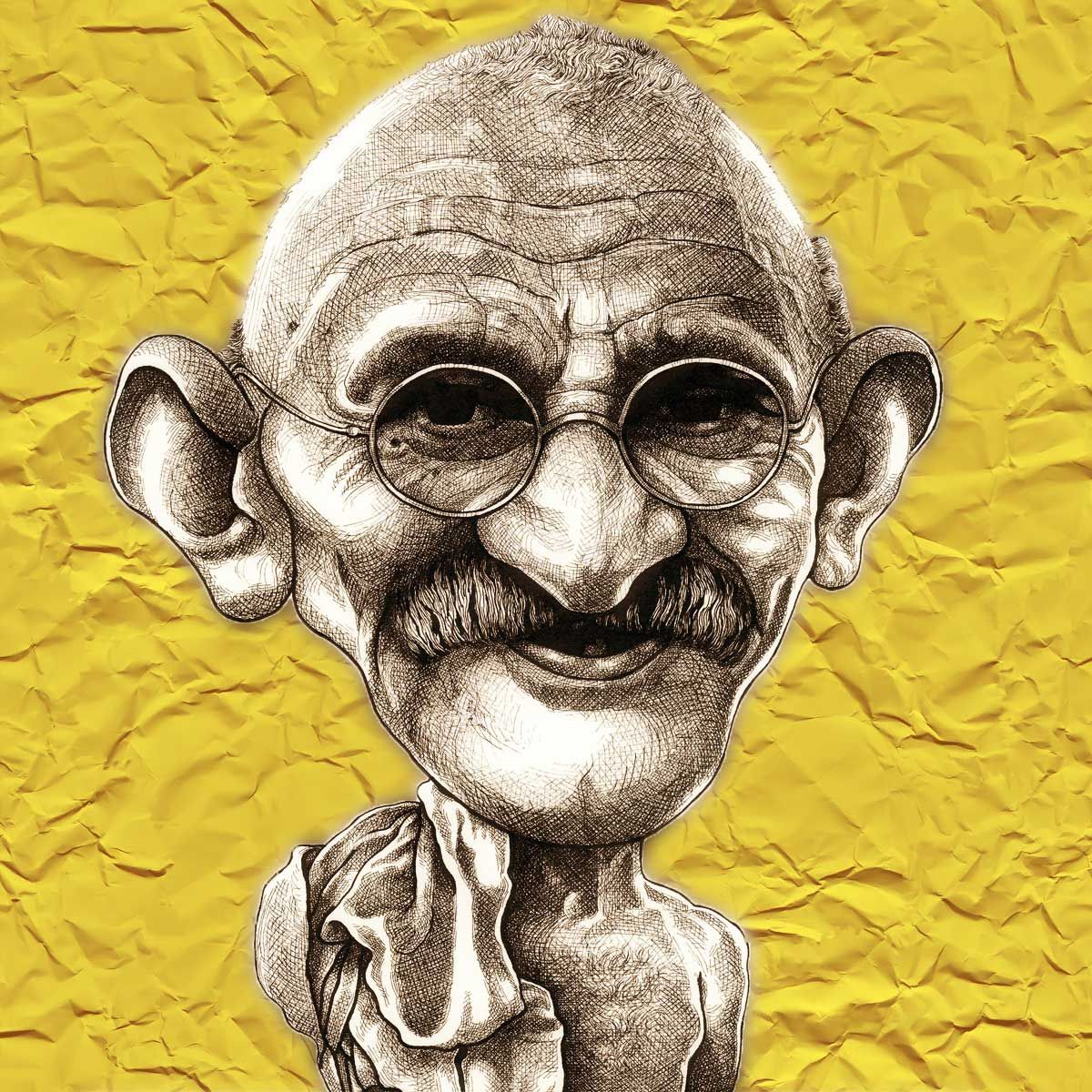
Since childhood, we all have been taught that the great son of India, Mahatma Gandhi is the "Father of the Nation". But surprisingly, the government of India does not consider Gandhiji as the Father of the Nation! According to government's documents, Gandhiji was not conferred with this title, constitutionally.
This amazing fact was revealed by the persistent efforts of the youngest RTI activist 10-year-old Aishwarya Parashar, who sought response on this from the Central government. In a written reply, the government said that Mahatma Gandhi cannot be accorded the 'Father of the Nation' title by government as the Constitution does not permit any titles except educational and military ones. While giving reference to the Article 18 (1) of the Constitution, the MHA had said that it does not permit any titles except education and military ones. The MHA had transferred Aishwarya's appeal to the National Archives of India.
The government of India does not consider Gandhiji as the Father of the Nation
Unsatisfied by the government's answers, Aishwarya had filed an appeal to the Central Information Commission (CIC). Then, the Central Information Commissioner Basant Seth had stated, "There is no order/document on record by which Gandhiji was given the title of "Rastrapita".
Last year, the reply to an RTI query came as a shock to all those Indians who believed that Republic day, Independence day and Gandhi Jayanti are national holidays. Apparently, these three dates were never notified by the government.
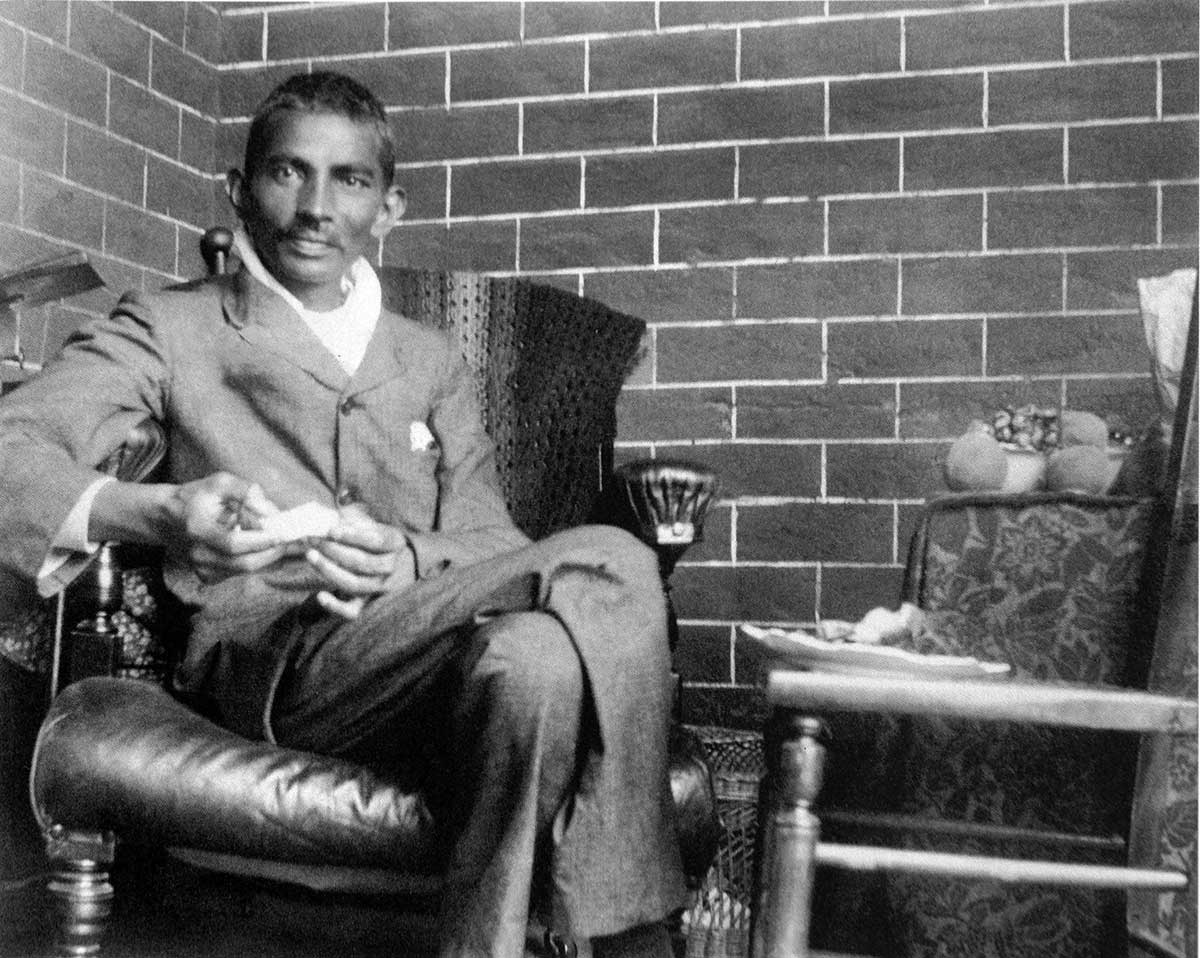 Gandhi in South Africa |
Gandhi in South Africa fought for supremacy of White race
Gandhi in South Africa. “He was only 26 years old when he worked to racially segregate the Durban Post Office,” notes Friedrich. However, he reports that Gandhi was 34 years old in 1903 when he wrote a letter to the colonial British government declaring, “The white race of South Africa should be the predominating race.”
He continues: “Analysis of Gandhi’s 1925 autobiography and comparison to his contemporary writings 20 or 30 years earlier exposes direct contradictions which can only be explained as him lying about his actions in South Africa. Throughout his entire time in South Africa — not just for a short period, but for two decades — Gandhi repeatedly wrote about his contempt for black people and worked to create a three-tiered system of racial segregation to separate blacks from Indians. Gandhi vociferously protested against equality.”
He points to an 1895 petition to the colonial government which praises “Brahmanism,” the caste-based philosophy that holds the highest-caste Brahmans as supreme. Referring to Indians as children of the land which produced Brahmanism, Gandhi wrote that “one cannot but help regretting that the children of such a race should be treated as equals of the children of black heathendom and outer darkness.”
Friedrich explains that scholarship about Gandhi’s South African period was previously hindered by lack of information. “Gandhi’s unedited ‘Collected Works’ runs to 100 volumes. Compilation only began in 1960 — 12 years after Gandhi’s death — and wasn’t completed until 1999. Before it was digitized and made freely available as PDFs, researchers had to buy the massive set and flip through thousands of pages. Academics before the 21st century simply didn’t have access to any original source material. All they had was Gandhi’s self-promotional autobiography, or biographies like the first one written about him in 1909 — which he commissioned. That’s not reliable material for creating a factually accurate historical narrative.”
Referring to the 1906 Bambatha Uprising, when the colonial British government fought a war against Zulus, Friedrich adds, “In 1925, Gandhi told the world that he joined the British Army because he wanted to provide medical care for the Zulus, but he leaves out that he spent a year publishing newspaper articles calling on Indians to fund British troops, to join the Army because ‘the whites want us to’, trying to convince the British to provide Indians with arms and weapons training, and demanding formation of a permanent armed Indian corps. Just look at what he wrote right before he went to the battlefield.”
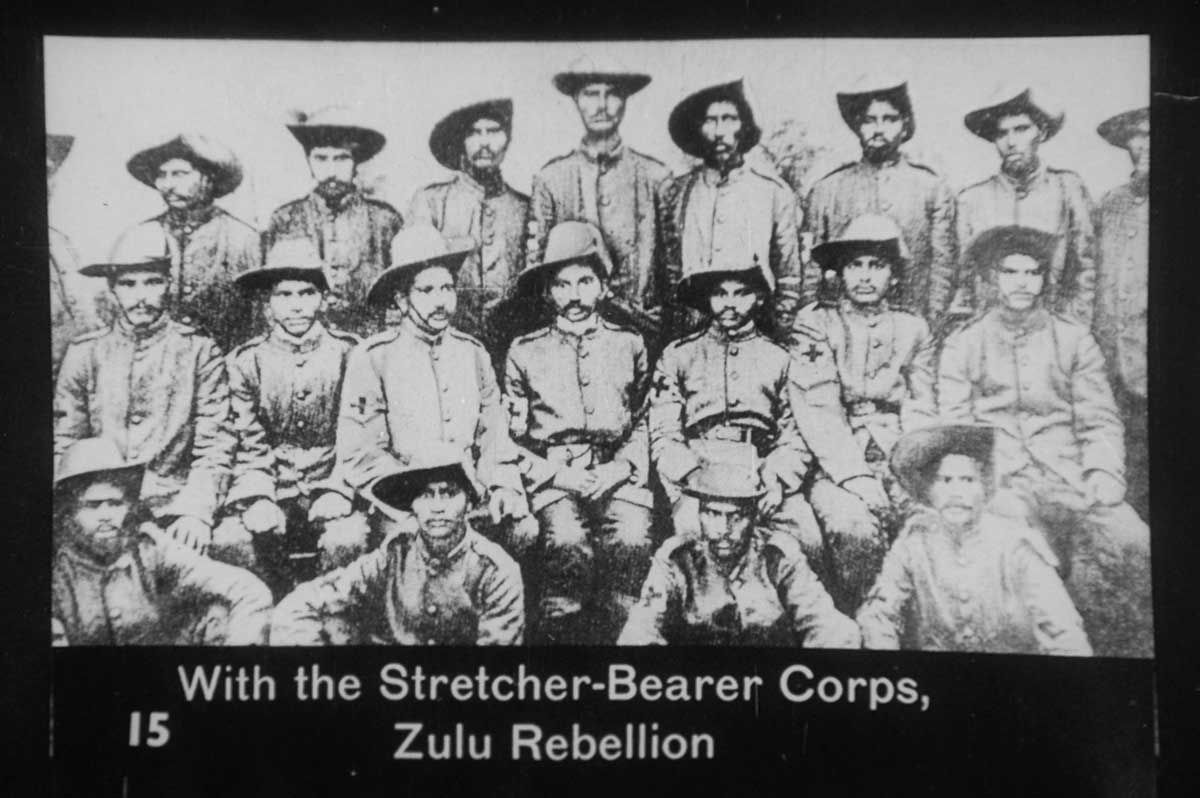 Gandhi Zulu rebellion |
Friedrich points to a June 1906 article by Gandhi where he wrote, “There is hardly any family from which someone has not gone to fight the Kaffir rebels. Following their example, we should steel our hearts and take courage. Now is the time when the leading whites want us to take this step.” The term “Kaffir,” a racial slur which was banned in South Africa in 1976, appears frequently in Gandhi’s writings. “Gandhi’s use of the K-word makes it inescapably obvious that he meant it in a derogatory sense,” says Friedrich. He notes an 1899 statement by Gandhi where he said, “Indians are undoubtedly infinitely superior to the Kaffirs.”
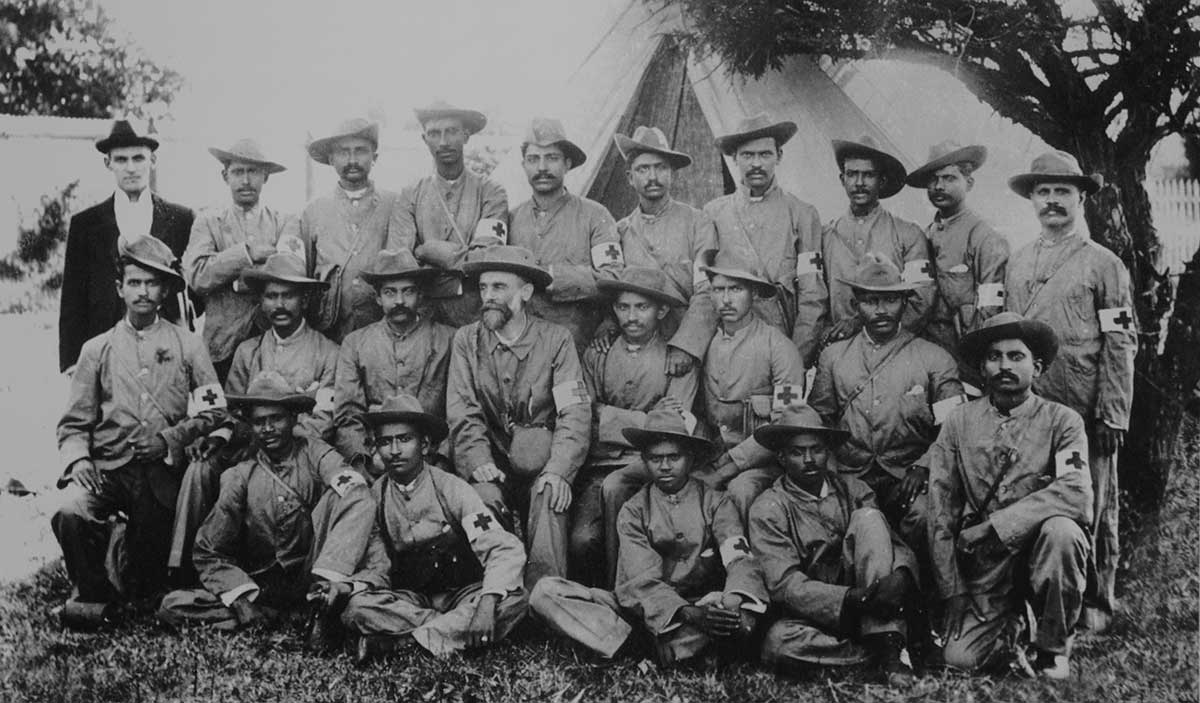 Gandhi with the stretcher-bearers of the Indian Ambulance Corps during the Boer War, South-Africa Standing: H. Kitchen, L. Panday, R. Panday, J. Royeppen, R.K. Khan, L. Gabriel, M.K. Kotharee, E. Peters, D. Vinden, V. Madanjit. Middle Row: W. Jonathan, V. Lawrence, M.H. Nazar, Dr. L.P. Booth, M.K. Gandhi, P.K. Naidoo, M. Royeppen Front Row: S. Shadrach, "Professor" Dhundee, S.D. Moddley, A. David, A.A. Gandhi |
Gandhi offered his services to the army for four times
Four times Gandhi offered his services to the army: in 1899-1900 during the Boer War, in 1906 on the occasion of the so-called Zulu Rebellion, in 1914 during his stay in London at the outset of World War I; and lastly in India in 1918 near the conclusion of that war. After World War I Gandhi on a number of occasions was asked how he could reconcile his participation in war with his principle of nonviolence (ahimsa). Bart de Ligt was not the only person to correspond with Gandhi on this issue, but he was the most forthright and compelling. Leo Tolstoy’s friend and secretary, Vladimir Tchertkov, had also questioned Gandhi about it. In fact, it was a common reverence for Tolstoy’s doctrine of non-resistance or non-violent resistance that was the foundation for the critical dialogue between Bart de Ligt and Gandhi between 1928 and 1930.
When the Boer War broke out in 1899, Gandhi urged his fellow Indians to support the British monarchy, irrespective of whether the war might be right or wrong, and organized an Indian Ambulance Corps for service with the British army. Gandhi and his ambulance corps might not have been involved in the fighting to any great extent during the Boer War, but 28,000 white and 20,000 black people were to die within three years in the war.
Shortly before the beginning of the First World War in 1914, Gandhi began to realize that participating in war on behalf of Britain was to collaborate in criminal acts: “One who would not help in a slaughter-house should not help in cleaning the slaughter house either.” Yet, after the First World War began, Gandhi repudiated that position by recruiting Indian students in London for army service, although as non-combatants. Gandhi, as a public figure felt obliged to recruit his countrymen precisely because they did not share his faith in nonviolence, just as, in 1906, Gandhi was at first alone in espousing his belief in satyagraha among his Indian compatriots in South Africa. Indian students should play their part in the war alongside young Englishmen, if they wanted to prove their country’s readiness for self-government. There was considerable opposition to Gandhi’s view, some of the Indians arguing that they were virtually slaves and had no interest in fighting for their masters.
In letters to his nephew Maganlal, Gandhi confirmed that his personal pacifist conviction was unconditional and that he would never seize a weapon. But observing ahimsa (nonviolence) in wartime as in peacetime, could still pose an ethical dilemma.
Gandhi returned to India on his doctor’s advice, arriving in Bombay in early January 1915. In Gandhi’s statements we find different, conflicting lines of argument. There is the nationalist appeal to contribute to the defense of the Empire and, thus, gain the political status of India as a partner with equal rights. Gandhi defined swaraj (home rule) as “complete independence in association with Britain”, and this end should be achieved by the use of weapons, if need be. In a speech at Surat on 1 August 1918, Gandhi declared, “Swaraj is not for lawyers and doctors but only for those who possess strength of arms.” Gandhi complained about the timidity and incapability of his fellow countrymen; participating in the war would develop in them a spirit of independence and physical and mental fitness. Gandhi compared India’s situation to those of the Boer in South Africa who had gained independence by fighting against the British: “We can count only on our own military strength.” Gandhi’s expectation that India’s freedom could be won on the battlefields of France was not shared by most of his compatriots who were afraid of losing their lives and who could not follow Gandhi’s idea of becoming strong.
On 27 April 1918, Mohandas Karamchand Gandhi agreed to attend a War Conference in Delhi requested by Chelmsford, the then British Viceroy of India. Gandhi was a mass leader and Chelmsford was pretty sure that only Gandhi could urge Indians to participate in the World War I on behalf of British. Well, the British did not invite Bal Gangadhar Tilak, also a mass leader then, as they believed on his patriotism and his refusal. MK Gandhi delivered a speech after attending the War Conference, urging Indians to help the British as soldiers in the war.
Mohandas Karamchand Gandhi moved from place to place asking Indians and offering himself to participate in the war too. That Mohandas Karamchand Gandhi preached Ahimsa is a myth. He only misused it to his advantage, forcing it to only Hindus when the fight against British gained momentum. Where was his Ahimsa during World War I? Do you know MK Gandhi even wrote a letter to British Viceroy Chelmsford after he attended the War Conference and agreed to help British recruit Indians for them (preacher of Ahimsa sending his own countrymen to death zones on behalf of British). To quote Gandhi’s exact words from his letter, extracted from the book The Patient Assassin by Anita Anand: “I have an idea that, if I became your RECRUITING AGENT-IN-CHIEF, I might RAIN MEN on you.”
Many freedom fighters were taken by surprise at Gandhi’s U-turn. How could he support the British and how could he agree to the British of sending Indians to death fields, the war zones? They also questioned how a votary of Ahimsa could agree to Hinsa. But Gandhi’s mass leadership bore fruits! His request was accepted! Had he then requested them to fight against the British, History would have been different! Over a million Indians agreed to be recruited to fight on behalf of British in World War I following Gandhi’s request. Over one million Indians who joined British were sent overseas to participate in War. In this war, at least 74,187 Indian soldiers died and over 67,000 were wounded. All thanks to Mohandas Karamchand Gandhi!
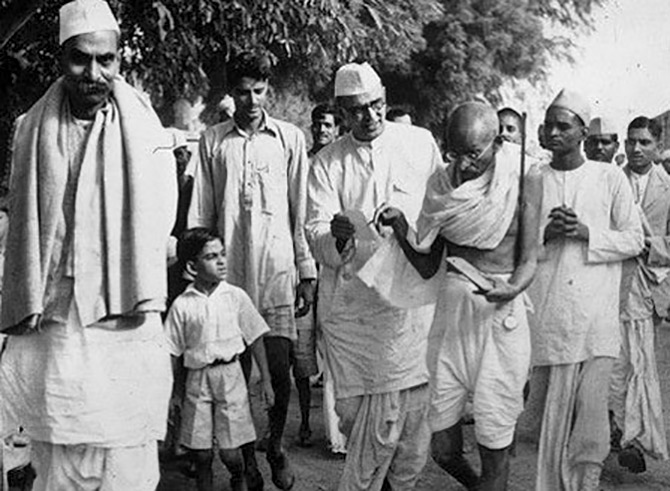 Quit India Movement |
On 7th April 1934, Mohandas Karamchand Gandhi completely suspended his campaign of Civil Disobedience. His ‘Quit India’ movement later was a failure too. And then Gandhi was completely out of the scene. By then lakhs of freedom fighters have already sacrificed their lives for the country. Netaji Bose played an instrumental role with his Azad Hind Fauz. 26000 plus Azad Hind Fauz soldiers attained martyrdom for the freedom of India. We all know the consequences of the INA trials and ultimately the Royal Navy Mutinee that resulted into another 1857 type of war for independence, ultimately forcing the British to leave India.
While lakhs of freedom fighters resisted, revolted and sacrificed their lives for the freedom we enjoy today, we only know Gandhi gave us freedom. We primarily read Gandhi in our history textbooks. We had a complete booklet on his life in our Standard X in school (too much of Gandhi-Gandhi we read then)! Just regret if that booklet of 100+ pages on Gandhi had short accounts of our freedom fighters who resisted British or short accounts of our warrior ancestors who resisted against Izlamic invaders and rule over a period of 1000 years! Saffron Swords, published by Garuda Prakashan, that contains 52 episodes of valor from 8th century to Independence, is a tribute to our warrior ancestors.
Khilafat Movement was started by Muhammad Ali, Shaukat Ali, Abul Kalam Azad for Turkey to restore caliph. Mohandas Karamchand Gandhi supported it which paved way for riots and partition and ultimately led to suffering of Hindus.
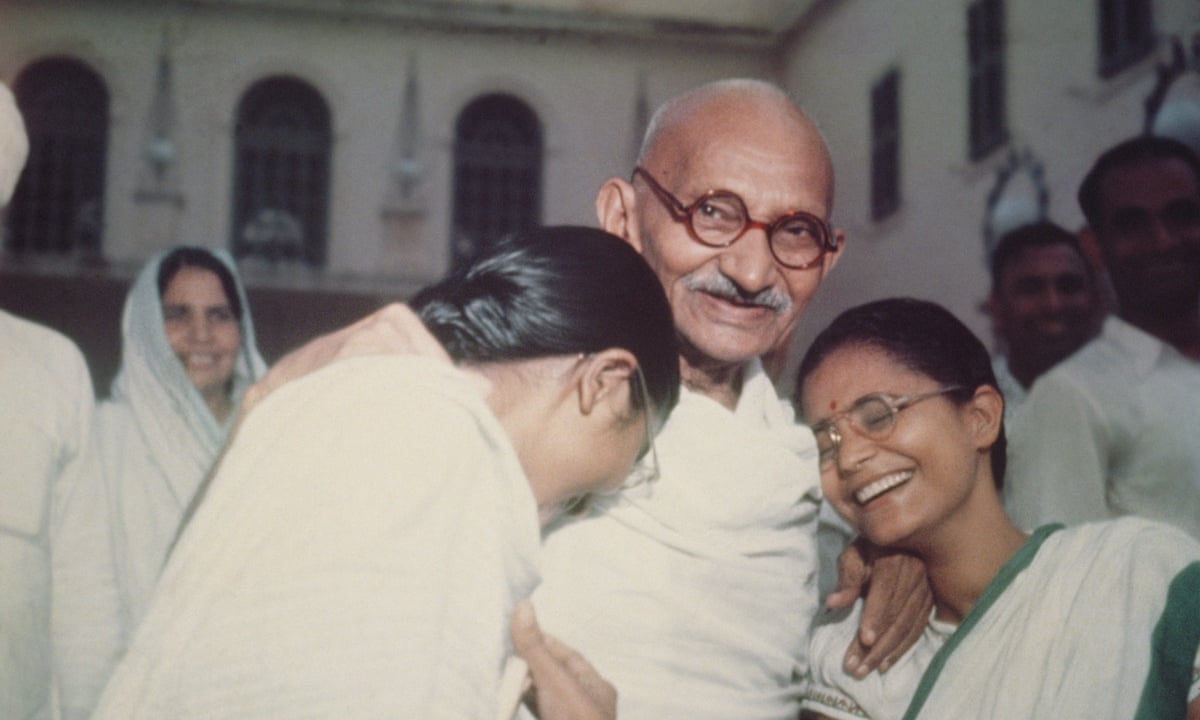 |
Why would Gandhi need women around him all the while in his later years? Why would he sleep naked in the company of women? His grand-niece Mridula Manu Gandhi started living with him from 1942. Manu was then only 14 years old. During the Noakhali Ri0ts Manu traveled with Gandhi in the riot-hit areas. She, then aged 17, was his personal assistant. To quote from Page 584 from the book Mohandas: A True Story of a Man, His People, and an Empire by Rajmohan Gandhi on the barbarism of Mohandas Karamchand Gandhi, on how for his scrubbing stone, he sent Manu through the riot hit areas all alone for around 30 miles to get it back:
“A harder lesson had been given a few days earlier when Manu left behind Gandhi’s scrubbing stone — given to him by Mira — in the village of Bhatialpur. Discovering the loss later in the day (15 Jan.) in Narayanpur, Gandhi asked Manu to walk back alone to Bhatialpur and retrieve the pumice stone. Though an old woman had thrown the stone away, Manu located it and hurried back.
Saying, ‘Take your stone’, she threw the object before Gandhi, who laughed and said that Manu had passed a test. He added: If scoundrels had seized and killed you I would have danced with joy….”
In an interview to the BBC, BR Ambedkar had said thus about Mohandas Karamchand Gandhi, quoted from ‘Dismantling Sainthood: Ambedkar on Gandhi’ by A Ranganathan: “I knew Gandhi better than most people because he opened his real fangs to me, and I could see the inside of the man. Gandhi was all the time double-dealing. He ran a paper in English and another in Gujarati, and if you read them both you will see how he was deceiving the people. In the English paper he posed himself as an opponent of the caste system and of untouchability and that he was a democrat, while in the Gujarati one he supported the caste system and professed all the orthodox dogmas that have kept India down all through the ages. Someone ought to write his biography by making a comparative study of the statements he made in these papers. The West reads only the English paper. Gandhi never wanted real upliftment of the Dalits. All he cared about were issues of absolutely no consequence to us like temple entry. Gandhi was never a reformer.”
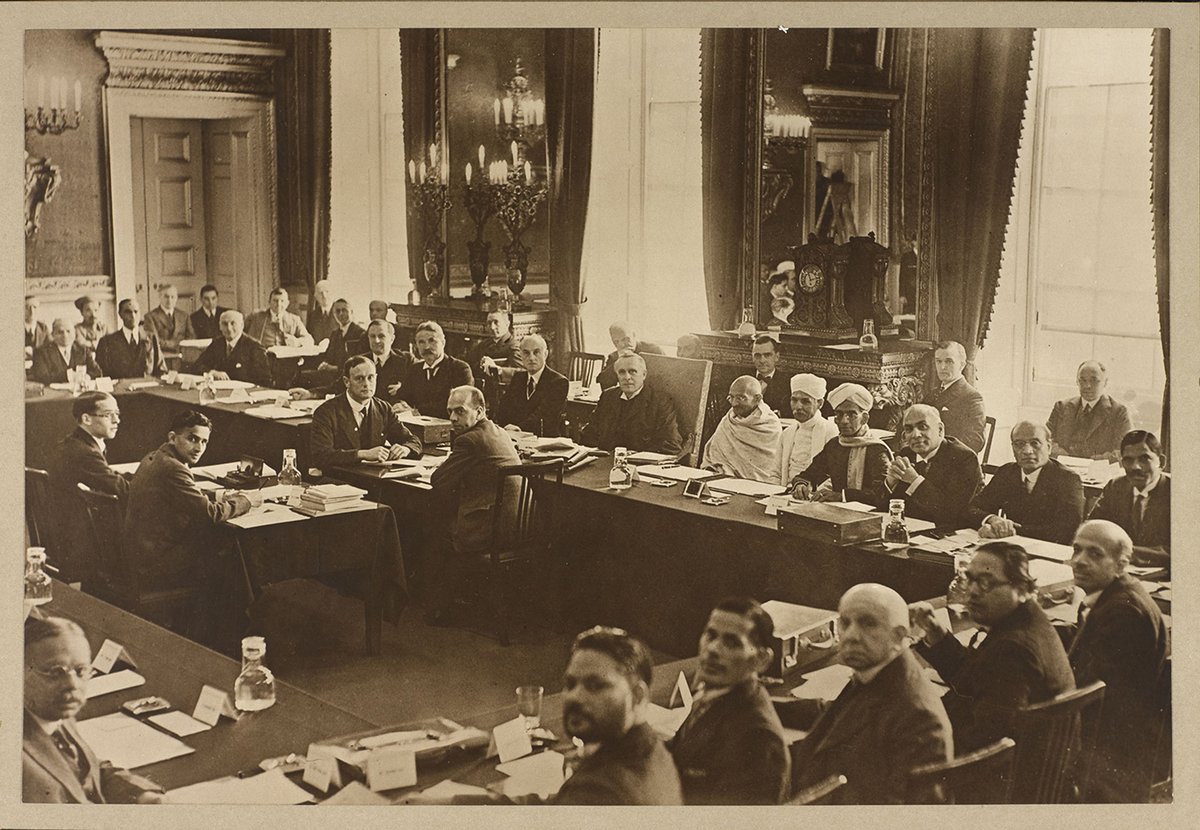 Gandhi and Ambedkar attended the Second Round Table Conference, after which the British established separate electorates for the oppressed castes. When Gandhi went on a fast unto death to oppose this, Ambedkar saw it as blackmail |
And yet, we address Gandhi as Mahatma, as ‘Father of the Nation’. If partition had to happen and if he was a true leader he could have facilitated peaceful partition and saved millions of lives that resulted from it. And the same policy of appeasement he followed continues till today!
Since childhood, we all have been taught that the great son of India, Mahatma Gandhi is the "Father of the Nation". But surprisingly, the government of India does not consider Gandhiji as the Father of the Nation! According to government's documents, Gandhiji was not conferred with this title, constitutionally.
References:
ofmi.org - Admin | 13, Oct 2018
oneindia.com
commons.wikimedia.org
myindiamyglory.com
 Support Us
Support Us
Satyagraha was born from the heart of our land, with an undying aim to unveil the true essence of Bharat. It seeks to illuminate the hidden tales of our valiant freedom fighters and the rich chronicles that haven't yet sung their complete melody in the mainstream.
While platforms like NDTV and 'The Wire' effortlessly garner funds under the banner of safeguarding democracy, we at Satyagraha walk a different path. Our strength and resonance come from you. In this journey to weave a stronger Bharat, every little contribution amplifies our voice. Let's come together, contribute as you can, and champion the true spirit of our nation.
 |  |  |
| ICICI Bank of Satyaagrah | Razorpay Bank of Satyaagrah | PayPal Bank of Satyaagrah - For International Payments |
If all above doesn't work, then try the LINK below:
Please share the article on other platforms
DISCLAIMER: The author is solely responsible for the views expressed in this article. The author carries the responsibility for citing and/or licensing of images utilized within the text. The website also frequently uses non-commercial images for representational purposes only in line with the article. We are not responsible for the authenticity of such images. If some images have a copyright issue, we request the person/entity to contact us at This email address is being protected from spambots. You need JavaScript enabled to view it. and we will take the necessary actions to resolve the issue.
Related Articles
- If only India’s partition chilling wound was not enough, Gandhi did his last protest again only to blackmail India into giving 55 crores to Pakistan, dragged Hindu, Sikh refugees seeking shelter in mosques to die in cold: And we call him Mahatma, not for
- Gandhi corrupted the original Hindu bhajan ‘Raghupati Raghav Raja Ram’ by including ‘Allah’
- 'Muh me ram bagal me chhuri' - Gandhi’s politics is hollow and noisy, full of treachery and deceit’: Read what Dr. Ambedkar said about the ‘Mahatma’
- Harmonizing Nathuram Godse: Why India should move beyond denouncing him, a man who altered the course of not only the politics of the country but the very history of the Hindu Civilisation and, by extension, the world at large
- Calcutta Quran Petition: A petition to ban the Quran altogether was filed 36 years ago, even before Waseem Rizvi petitioned for removing 26 verses from Quran
- Anuj Dhar claims that Subhas Chandra Bose was suspected of being ‘poisoned’ after ouster from the post of Congress president
- Moplah Genocide of the Malabar Hindus, 1921: Thousands of Hindus slaughtered
- Speech of Sardar Patel at Calcutta Maidan in 1948 busts the myth of ‘Muslims chose India’ and is relevant even today
- Northeast is not the Part of Pakistan because of 'Netaji': Subhas Bose and the ‘special’ case of Assam
- Maligning of India by British Raj since the 1800s
- Indian movies have become propaganda platform to distort real incidents and perpetuate lies
- Vinayak Damodar Savarkar – A Misunderstood Legacy
- Nehru's Himalayan Blunders which costed India dearly - Integration of Princely States
- Prophecies of Jogendra Nath Mandal getting real after seventy years of his return from Pakistan
- Wikileaks and 5 lesser know facts of Indira Gandhi: Nuclear technology, corruption and foreign relations





















